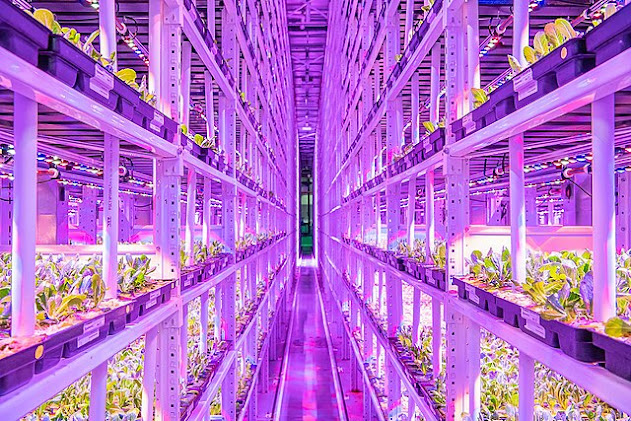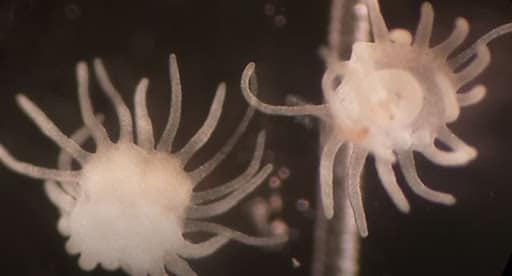This is part 2 of a series of articles,
Read part 1 here.
VERTICAL FARMING
Food produced with conventional agricultural methods generally travels around 3218Km, since farmers settle wherever the best natural conditions for food production are, needless to say, the CO2 emissions skyrocket because of this.
Contrarily, Vertical farms can settle anywhere, independent of climate conditions. They can thus be located where consumers reside. Its local production and harvesting of crops greatly reduce the amounts of ‘food miles’, which positively impacts travel costs and carbon footprint. This is particularly visible when transporting fresh foods, as their preservation through cooling methods produces a lot of CO2 emissions.
What are vertical farms?
Vertical farms instead of farming over a large plane horizontally they as their name suggests employing planes vertically over one another such that crops can be grown without soil and just nutrient-rich water flowing through the water system and artificial lighting as shown below
 |
Hydroponics, the growing of food in nutrient-rich solutions, is a modern development. The first published work on this subject was done in the 1930s. In 1945 the US military began research during World War II, and this was continued by NASA in 1983.
Traditional agriculture uses 70 percent of the water on the planet accessible to us and Hydroponics is 70 percent more efficient than traditional agriculture Meanwhile there is another modern farming technique Aeroponics that uses 70 percent less water than hydroponics! This makes the case that we can drop down our water consumption to 6 percent.
But these are not the advantages that vertical farms offer their main advantage is in the location and material they use:
LESS OR NO USE OF PESTICIDES
The use of no soil promotes the entry of a very small number of pathogens in the vertical field. That leads to no or very less number of pesticide use which is great for the environment and economically too.
VERY LOW TRANSPORTATION COST
The transportation cost is reduced to only a fraction of the amount because vertical farms can be made near or inside the residential buildings and can reduce not only transportation cost and pollution but less time from field to consumer promotes a healthier consumption model.
CLEAN AND SUSTAINABLE
Vertical farms can utilize electrical power for functionality even if the sun is not shining it can provide light through electricity and it damages no soil thus it is sustainable from the point of view of land use and because water that is not consumed by the plant is not flowed or absorbed by the terrain Nutrient-rich water is recycled and thus it’s also sustainable form the point of view of Water systems
IMMUNE TO WEATHER
Vertical farms suffer no weather damage like flood, rain scarcity, or climate change factors because they are in a controlled environment. This also saves the trees thus saves topsoil of the area that would have been used for irrigation
COMPARISON
Let's compare the two farming methods to put things into perspective :
The amount of water used to produce 1kg of lettuce by traditional agriculture is comparable to filling a big freezer. Meanwhile, Vertical farms use 90% less water to produce the same amount of lettuce, which is equal to the volume of a bucket and 90% less space on land.
Vertical farms also achieve a higher crop yield. If you grow lettuce on an agricultural field of 1x1 m^2, you can yield 3.9 kg every year. When lettuce is grown on the same acreage in a greenhouse, 41 kg can be harvested. Vertical farms can even yield 20X more lettuce than agricultural fields.
Additionally, vertical farms often use hydroponics or aeroponics methods to grow crops without soil. Hereby, it can support the supply of fresh produce despite the expected future scarcity of land.
But there are reasons and challenges for why this technology has not been adopted worldwide yet.
The biggest downside of vertical farms is a large amount of energy it takes to grow crops, between 30-175kWh per kg more than usual. With that difference in energy, you could run your washing machine 132 times or so.
However, the energy used in vertical farms is not wasted, with their energy efficiency considerably higher. With cities moving towards more renewable sources of energy, vertical farms could further reduce their carbon footprint by purchasing or producing their own clean energy.
Secondly, the labor to operate these farms must be highly skilled, this narrows its scope for widespread adoption in rural areas where education is not given much importance.
ENVIRONMENTAL DAMAGE BEING CAUSED.
The major problem with conventional farming is sustainability and feasibility. We cannot scale the current farming methods to meet the population requirements of the future generation even if we make it economically feasible with the help of renewable energy farming machinery and transportations
Because of the following facts:
According to the UN, 925 million people currently don’t have enough to eat. That is almost 1 out of 7, moreover, we need to increase our food production to meet the rising population demands.
Currently, we farm 38 % of the total land in the world under our influence, this number must rise in order to incorporate irrigation for the rising population but it’s not sustainable because there is a common perception that organic farming is more ecologically sustainable than conventional farming.
As a result of industrial farming conditions, today’s mounting environmental stresses are further exacerbated, including:
1) Water pollution, including fertilizer runoff causing eutrophication (Eutrophication is the process of increased nutrient input to a lake over the natural supply.)
2) Chemical leaching ( leaching primarily describes the process of water carrying soluble substances or small particles through soil or rock, This leads to decreased nutrient value)
There are many factors in how sustainable farming practices are, besides the use of artificial chemicals bad for the environment E.g.:Erosion ( Trees are chopped down to make area for irrigation of small crops, The roots of trees are responsible for holding topsoil into the place during the time of heavy runoff/floods. )
Soil compaction (Soil compaction can lead to poor root growth because it decreases the number of macropores to allow water to seep into the soil and thus reach the roots which reduce crop yield through poor water and nutrient uptake.)
Loss in biodiversity (Because of the fact that Wildlife is displaced to make area for irrigation, Biodiversity of the place decreases.)
+++++++++++++++++++++
CONCLUSION
The conclusion of highlighting and comparing the requirements of land and water consumed in the two types of farming the conventional and vertical, it's clear that for future we must adopt the vertical way of farming that cuts transportation cost and not only makes the food cheaper and more accessible but also drops the CO2 emissions in the transportation to a negligible amount. On top of it cuts to water and land consumption down to 90% of our current methods!
The only catch is we make electricity cheaper through solar energy to really make this a worldwide revolution as we have discussed it uses a lot of energy to produce this level of yield in such slim parameters of resources.
It's possible to do this as it has been demonstrated but governments shall give help as the initial investments are high to make this a reality to save our environment for future generations.
REFERENCES
Abundance by Peter H Diamandis .








